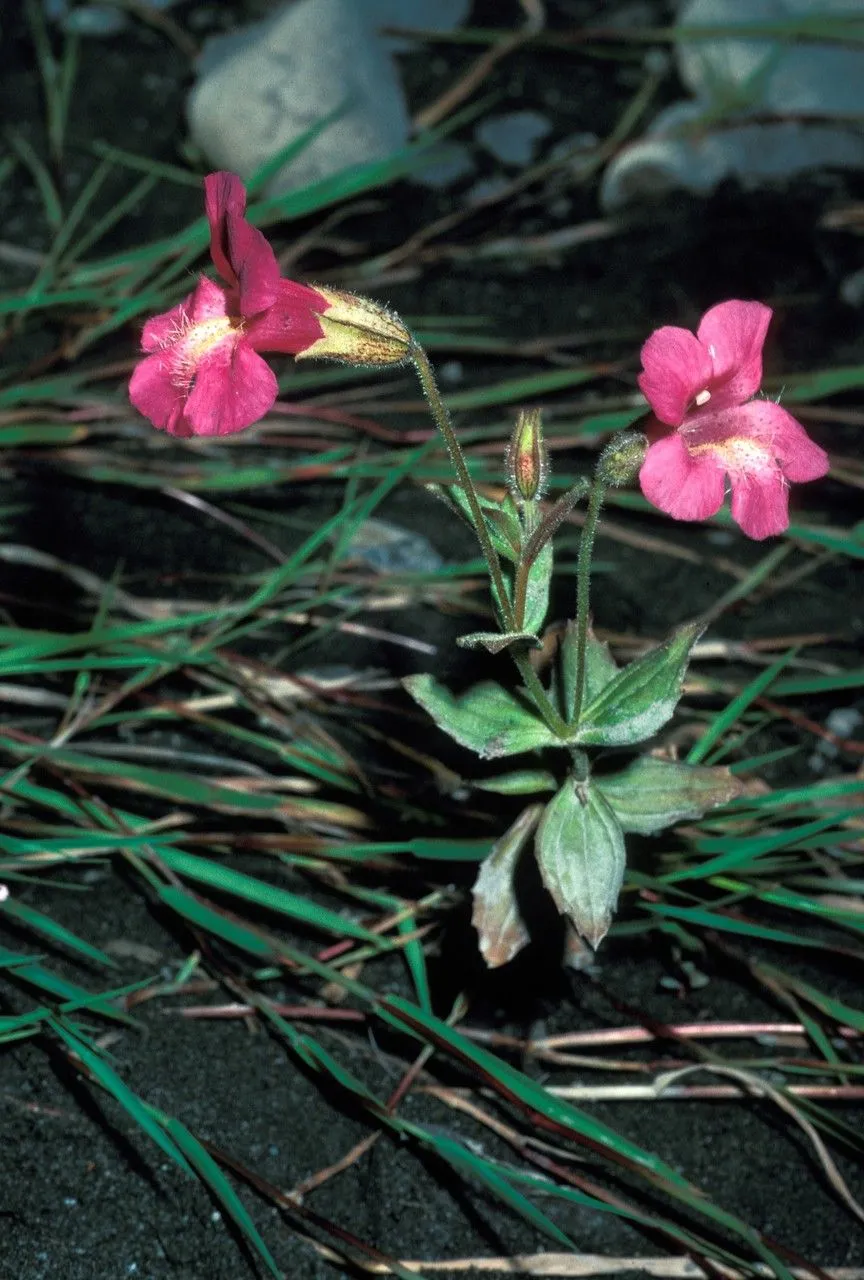
Author: G.L.Nesom & N.S.Fraga (Pursh)
Bibliography: Phytoneuron 2012-39:36. 2012
Year: 2012
Status: accepted
Rank: species
Genus: Erythranthe
Vegetable: False
Observations: Alaska to W. U.S.A.
The vibrant and alluring Purple monkeyflower, scientifically known as Erythranthe lewisii, is a notable member of the Phrymaceae family. This striking flower draws attention with its brilliantly colored blossoms and is commonly found in diverse regions spanning from Alaska to the western United States.
Renowned for its captivating floral display, the Purple monkeyflower thrives in a variety of habitats including moist meadows, stream banks, and alpine environments. Its presence spans a substantial geographical range, showcasing its adaptability to different climates and altitudes. The flower’s natural distribution from the frigid terrains of Alaska to the temperate zones of western USA highlights its impressive resilience and ecological versatility.
Characterized by its prominent, tubular flowers, the Purple monkeyflower exhibits a stunning palette of purple hues, often accentuated by intricate patterns and a delicate interior structure. These blossoms not only contribute significant aesthetic value to their surroundings but also play a crucial role in the local ecosystem. They attract a variety of pollinators, including bees and hummingbirds, which rely on the flower for nectar and, in turn, facilitate the plant’s reproductive process.
The botanical journey of Erythranthe lewisii has been well-documented in scientific literature. In 2012, an insightful publication by G.L. Nesom and N.S. Fraga in Phytoneuron provided in-depth information about the species, offering valuable contributions to the understanding of its characteristics and distribution. This authoritative source underscores the importance of the Purple monkeyflower within both the botanical community and its natural habitat.
Overall, Erythranthe lewisii stands out as a remarkable species, admired for its beauty and ecological significance. Its widespread availability across various landscapes makes it an accessible and enchanting plant for both nature enthusiasts and botanists.
En: Purple monkeyflower, Lewis’ monkeyflower
Fi: Puna-apinankukka
Eng: lewis’s monkey-flower, lewis’ monkeyflower, great purple monkeyflower, pink monkeyflower, purple monkeyflower, red monkeyflower
Swe: skär gyckelblomma
Fra: mimule de lewis, mimule rose
Taken Jul 1, 1994 by Daniel Barthelemy (cc-by-nc)
Taken Aug 8, 2022 by Matt Santovasi (cc-by-sa)
Taken Jul 11, 2021 by Susan Graham (cc-by-sa)
Taken Sep 6, 2021 by randa keys (cc-by-sa)
Taken Aug 4, 2009 by Tela Botanica − Yoan MARTIN (cc-by-sa)
Taken Oct 19, 2018 by Nobili Maria Teresa (cc-by-sa)
Taken Aug 5, 2022 by Barb T (cc-by-sa)
Taken Sep 13, 2022 by Michael Finch (cc-by-sa)
Taken Jun 22, 2021 by Cade Lillquist (cc-by-sa)
© copyright of the Board of Trustees of the Royal Botanic Gardens, Kew.
Family: Myrtaceae Author: (F.Muell.) K.D.Hill & L.A.S.Johnson Bibliography: Telopea 6: 402 (1995) Year: 1995 Status:…
Family: Rubiaceae Author: Pierre ex A.Froehner Bibliography: Notizbl. Bot. Gart. Berlin-Dahlem 1: 237 (1897) Year:…
Family: Sapindaceae Author: Koidz. Bibliography: J. Coll. Sci. Imp. Univ. Tokyo 32(1): 38 (1911) Year:…
Family: Asteraceae Author: A.Gray Bibliography: Pacif. Railr. Rep.: 107 (1857) Year: 1857 Status: accepted Rank:…
Family: Fabaceae Author: Medik. Bibliography: Vorles. Churpfälz. Phys.-Ökon. Ges. 2: 398 (1787) Year: 1787 Status:…
Family: Aspleniaceae Author: (Cav.) Alston Bibliography: Bull. Misc. Inform. Kew 1932: 309 (1932) Year: 1932…